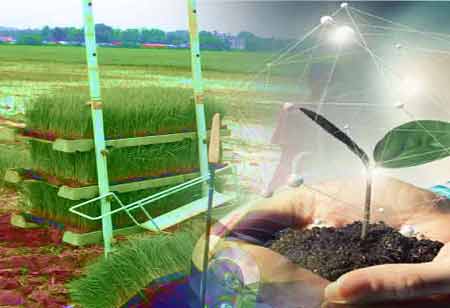Thank you for Subscribing to Agri Business Review Weekly Brief
Factors Influencing Seed Germination
Farming success is largely dependent on understanding the factors affecting seed germination.

By
Agri Business Review | Monday, May 08, 2023
Stay ahead of the industry with exclusive feature stories on the top companies, expert insights and the latest news delivered straight to your inbox. Subscribe today.
Different plant species have unique preferred environments where they can grow and prosper.
FREMONT, CA: Farming success is largely dependent on understanding the factors affecting seed germination. The intricate process of seed germination necessitates the activation of numerous biochemical and physiological changes in the seed. External elements like temperature, water availability, light, and soil type, as well as interior factors like seed coat permeability, hormonal balance, and seed viability, can all have an impact on how successfully seeds germinate. Understanding these elements is essential for successful plant cultivation since they have an impact on the general development and growth of crops. To ensure ideal plant growth and productivity, it is crucial to take into account the environmental and biological elements that impact seed germination.
The Process of Seeds Germination
The process through which a dormant seed starts to grow and develop into a new plant is known as seed germination. Water causes a seed to absorb moisture, expand up, rupture the seed coat, and allow the developing plant to emerge. Starch, proteins, and lipids that are stored in the seed are broken down into simpler forms that can be utilised by the developing embryo as the seed absorbs water. In addition to causing hormonal changes in the embryo, enzyme activation also causes the creation of gibberellins, which promotes the growth of the stem and roots. The radicle, or embryonic root, emerging from the seed is the first audible indication of germination. The plant is anchored by the radicle's downward growth into the soil, which also absorbs water and nutrients. The shoot emerges from the seed after the radicle has taken root, climbing upward towards the light and developing the first leaves. True leaves, which are often larger and more sophisticated than the cotyledons, or seed leaves, that first emerged from the seed, develop as the plant grows.
Factors that Affect Seeds Germination
Water, the fundamental element, is essential for seed germination as it activates enzymes, softens the outer seed coat, and provides the necessary fuel for growth. Without water, seeds cannot germinate and plants cannot grow. Water activates enzymes, softens the outer seed coat, and provides the necessary fuel for growth.
Temperature plays a critical role in seed germination, as it affects the metabolic rate and enzymes that break down stored nutrients. Different seeds have different temperature requirements, with the minimum temperature being the lowest, the optimum temperature being the most quickly and efficiently, and the maximum temperature being the highest. It is important to check the specific temperature requirements for the seed being planted and provide the optimal conditions for successful germination.
Light is a critical environmental factor that affects seed germination in many plant species. It is essential for the activation of gibberellin, which stimulates seed germination. Light can also affect the direction of seedling growth, leading to phototropism. Excessive light intensity can have a detrimental effect on seed germination.
Oxygen is essential for seed germination, as it is required for the metabolic processes that occur during germination. It is also essential for the activation of enzymes that break down stored food reserves and for the synthesis of new proteins needed for growth and development. Excessive amounts of oxygen can also harm seed germination.
Soil pH plays a crucial role in seed germination, as it affects the availability of essential nutrients and the presence of toxic substances that can either promote or hinder seed growth. It is important to know the preferred pH range for the plant species and adjust the soil pH accordingly to promote optimal seed germination and growth.
A crucial element that can have a big impact on seed germination and subsequent plant growth is the quality of the seeds. Low-quality seeds may fail to germinate or grow flimsy, unproductive plants, whereas high-quality seeds are more likely to germinate and generate healthy seedlings.
Seed germination and subsequent plant growth can be significantly influenced by the depth at which they are planted. Depending on elements including seed size, soil type, moisture content, and temperature, different plant species have varying requirements for ideal seed depth. For the majority of plant species, the optimal seed depth is two to three times the seed's diameter. However, this can change based on the particular plant species and the growing environment. To encourage the best possible seed germination and subsequent plant growth, it is crucial to adhere to the suggested seed depth for the particular plant species being grown.
Seed dormancy is a state in which the seed is physiologically mature but does not germinate under favourable environmental conditions. It can affect seed germination in several ways, such as timing of germination, uniform germination, protection from environmental stress, and seed dispersal. It can also reduce competition among seedlings, protect seeds from environmental stress, and facilitate seed dispersal.
Seed germination is a crucial step in the lifecycle of plants. A seed's ability to germinate successfully depends on several variables, including soil moisture, temperature, seed quality, depth, and dormancy. The likelihood that high-quality seeds will germinate and grow healthy seedlings increases when they are planted at the proper depth and exposed to ideal environmental conditions. Although it may delay germination, seed dormancy is crucial for the survival and propagation of plant species in harsh environments. For producers to optimise seedling emergence and subsequent plant growth, resulting in healthy and productive crops, they must have a thorough understanding of the elements that influence seed germination.





